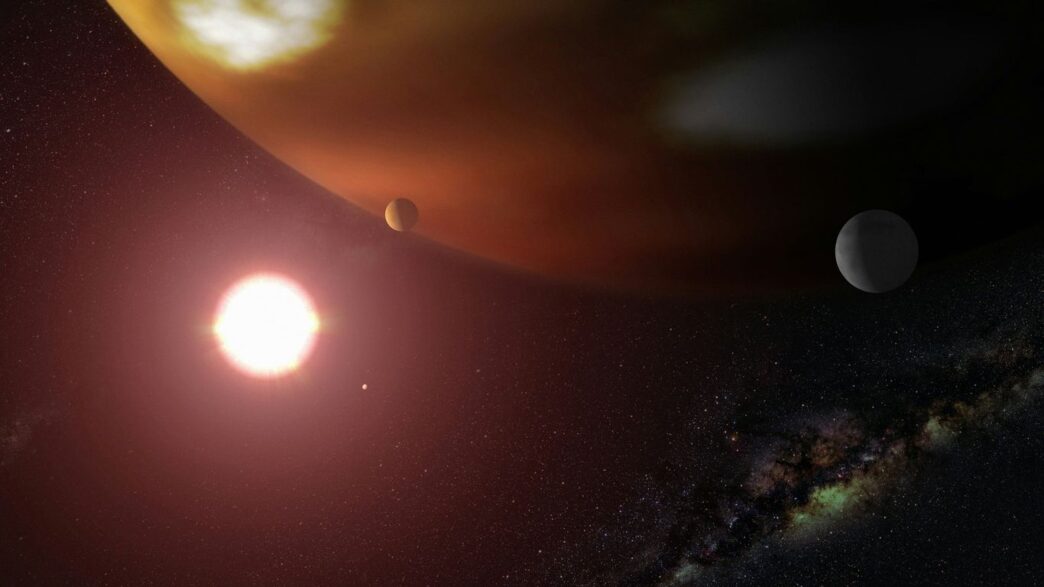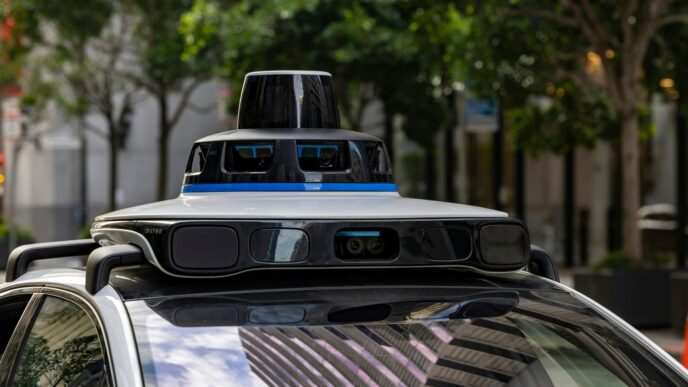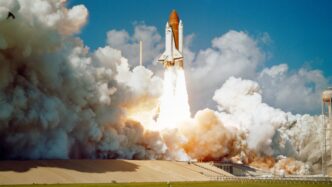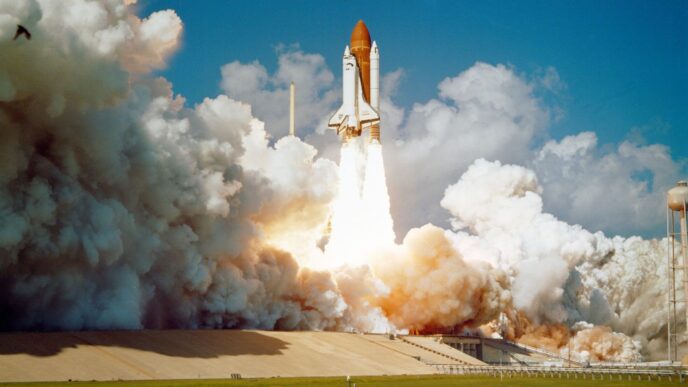New Frontiers: Space News on Major Missions and Probes
This past year has been anything but quiet for major space missions. New technology, surprising science, and a few broken records have made headlines, from Earth’s orbit to the edges of our solar system. Here’s what’s been happening.
NASA’s IMAP Mission Embarks on Uncharted Territory
September 2025 saw the launch of the Interstellar Mapping and Acceleration Probe—known as IMAP. Here’s the deal: IMAP is off to the first Lagrange point, sitting about one million miles away. Its big goal is to map the boundaries of our solar system and figure out how charged particles zip around out there. Scientists hope this data tells us why Earth stays so nicely protected from dangerous cosmic radiation. It’s a huge step for heliophysics, and folks at NASA are excited about what they’ll find after the probe gets settled and starts sending data.
Quick facts about IMAP:
| Launch Date | Destination | Main Purpose |
|---|---|---|
| Sept 2025 | Sun-Earth L1 | Study heliosphere boundaries |
- IMAP’s sensors will track solar wind changes almost in real time.
- It should give a clearer idea of the Sun’s influence far outside Pluto.
- The mission supports global collaboration in solar research.
The ESCAPADE Mars Twin Spacecraft Breakthrough
Next up, the Mars ESCAPADE mission. This NASA project, in partnership with Blue Origin, just reached a major milestone: two identical spacecraft are set to travel together to Mars. Their mission? Watch the solar wind crash into the Martian atmosphere from two different points. That’s never been done from orbit, and it could finally unravel why Mars lost so much of its air billions of years ago.
Here’s what’s new and cool with ESCAPADE:
- Two spacecraft working closely as a matched pair.
- Focus is on plasma and magnetic field data from multiple vantage points.
- The goal: get a three-dimensional, moving picture of the Martian environment.
If all goes to plan, public interest should pick up as launch activities ramp up. Closely following latest tech news and events is key for fans of groundbreaking missions like this one.
Sentinel-6B Advances in Satellite Payload Processing
Meanwhile, over in the world of Earth observation, Sentinel-6B is just about ready for action. Sentinel-6B is part of an international effort to keep tabs on ocean height, which matters when it comes to sea-level rise. The big headline this season: the satellite’s payload just cleared its final processing steps.
Here’s what stands out about Sentinel-6B:
- Uses advanced radar to measure sea surfaces within a few centimeters’ accuracy.
- Data will feed directly into global climate monitoring networks.
- Expected to pair with its twin, already in orbit, for better coverage and reliability.
The space community is waiting to see how Sentinel-6B’s upgrades pay off. Reliable, real-time ocean measurements are key for climate science, weather prediction, and tracking changes all the way from local coastlines to open oceans.
The stage is set for a busy year—IMAP’s trek into the unknown, the ESCAPADE twins’ team-up at Mars, and Sentinel-6B’s contribution to climate science are a reminder that space missions can affect everyone back here on Earth. More eyes than ever are watching what comes next.
Astrobiology and Exoplanet Discoveries Making Space News Headlines
James Webb Telescope Reveals Exoplanet Atmospheres
Over the past year, the James Webb Space Telescope has been changing the way we look at planets beyond our solar system. For the first time, scientists have detected detailed traces of water vapor, carbon dioxide, and even clouds in exoplanet atmospheres. Some of these findings have come from watching starlight filter through the atmosphere as a planet passes in front of its star. Here’s a quick summary of what Webb has picked up in 2025:
| Exoplanet | Detected Molecules | Potential Habitability |
|---|---|---|
| K2-18b | H2O, CO2, CH4 | Promising, but hot |
| WASP-39b | H2O, SO2 | Too hot for life |
| TRAPPIST-1e | CO2, possible H2O | Still under study |
Even though none of these planets are perfect Earth twins, the telescope is revealing how weird and diverse alien worlds can be.
Kepler’s Legacy and UC Santa Cruz Contributions
The Kepler mission ended years ago, but its data keeps turning up surprises. Researchers at UC Santa Cruz, for example, have been re-analyzing light curves and have spotted planets that got overlooked in the original searches. A lot of these new finds are small, rocky planets orbiting in the habitable zone—the region where liquid water could, in theory, exist. Here’s what the team at UC Santa Cruz has been doing:
- Re-examining thousands of faint, glitchy signals.
- Improving detection software to find small planets that bigger programs skipped.
- Publishing updated catalogs to help new missions, like Webb and TESS, target the best candidates.
Every time another overlooked planet gets added to the list, it feels like a small piece of the puzzle falling into place.
Searching for Signs of Life Beyond Earth
This year, the search for life outside our planet is picking up speed. Debates have been heating up about what counts as a "biosignature"—that is, a sign of life in another world’s data. It turns out, chemicals like methane or oxygen might not be enough by themselves. Scientists say they’ll need a bunch of clues before they claim they’ve found life, such as:
- Consistent chemical evidence from more than one telescope or method.
- Explanations that rule out volcanoes or other natural sources.
- Follow-up missions to pin down if these findings repeat over time.
Right now, a few planets are on the watchlist, but everyone’s cautious. One odd blip could get the headlines shouting, but it takes hard work and a lot of double-checking before anyone goes and makes history. Who knows? Maybe one of this year’s discoveries will finally bring us face to face with that big question: are we alone?
Space News on Lunar and Planetary Exploration

The pace of lunar and planetary exploration just keeps picking up, and 2025 is shaping up as a major year. Between new robotic rovers and global teamwork, there’s a lot happening that’s not just exciting but also shaping how we think about space in the near future. Here’s some of the recent news that’s been getting attention:
VIPER Lunar Rover’s Next Steps on the Moon
After years of shifting launch dates, VIPER (short for Volatiles Investigating Polar Exploration Rover) is finally about to head to the Moon’s southern pole. VIPER is the first rover sent specifically to map and test water ice in the Moon’s darkest, coldest places. Packed with three different spectrometers and a drill, it’s going to sample lunar soil right where the ice might be hiding. Scientists want to know if there’s enough ice to support astronauts or maybe even make rocket fuel in the future.
The main goals for VIPER:
- Map and analyze water ice in permanently shadowed areas
- Gather information to aid future lunar missions
- Take the first direct soil measurements at the Moon’s south pole
International Partnerships Fuel Artemis Accords
This year, several new space agencies became signatories to the Artemis Accords, and the list keeps on growing. The Accords are all about making sure countries share techniques, safety tips, and discoveries while exploring the Moon and, honestly, beyond. It’s not just a handshake for the cameras. Partners are teaming up on things like communications networks, lander tech, and how to handle dangerous sun blasts or moon dust. The Accords emphasize transparency and open science, so everyone gets a chance to benefit—including smaller nations just starting off in space.
Key elements driving successful partnerships:
- Open data sharing
- Joint planning for lunar gateways and surface operations
- Safety protocols for both crews and hardware
Testing NASA’s Lunar Electric Rover in Rugged Terrains
NASA’s electric lunar transport, the Lunar Terrain Vehicle, is getting plenty of time on tough Arizona landscapes in early 2025. Engineers are learning what the rover can handle by tackling everything from boulders to steep, sandy slopes, since the Moon won’t be any more forgiving. These tests aren’t just about seeing if it runs—they’re about making sure the crew can quickly hop in and use it for everything from science projects to emergency runs.
What’s been tested so far:
- Steering and traction on loose, rocky trails
- Battery life under constant use
- Rapid crew entry and exit for astronauts in spacesuits
Each of these missions and test runs is giving us something new about how— and if—humans can plan a more permanent stay on the Moon or even make the jump to Mars. As 2025 keeps rolling, the headlines keep getting more interesting, and the Moon is way closer to being within reach than ever.
Groundbreaking Advances in Astronomy and Skywatching

Supermoons and Meteor Showers Captivate Stargazers
There’s nothing like stepping outside and seeing the moon larger and brighter than usual—it kind of stops you in your tracks. October 2025 brought another supermoon, lighting up the sky and offering an unusually close view for millions of people worldwide. It’s not just the moon that’s amazing lately. The Draconids and Orionids meteor showers had their moments this month, giving us those quick streaks of light everyone hopes to catch. If you missed these events, there are still a few more meteor showers on the horizon this year. For many, stargazing is not just a hobby—it’s part of family traditions, science clubs, or solo late-night walks.
Here are some of the most popular skywatching events coming up for the rest of 2025:
- Leonid Meteor Shower Peaks: November 17
- Geminid Meteor Shower Peaks: December 14
- Last Supermoon of 2025: November 5
Gravitational Waves: A Decade of Discovery
It’s wild to think it’s already been ten years since humanity first picked up the signals from gravitational waves. When LIGO made that first detection, no one knew just how rich this new field would become. Now, researchers keep racking up new findings, like collisions between black holes and neutron stars, turning what used to be theory into observable reality. Every year uncovers more of these cosmic events, sometimes several in a month, and with upgraded detectors, the pace is only picking up.
| Year | Events Detected | Notable Discoveries |
|---|---|---|
| 2016 | 1 | First black hole merger |
| 2020 | 7 | First neutron star-black hole |
| 2024 | 12 | Multiple black holes, binaries |
| YTD 2025 | 8 | Unusual mass black hole found |
Saturn at Opposition and Other Celestial Sightings
Saturn at opposition is always a big deal for folks with a telescope or even just a good set of binoculars—seriously, this planet’s rings never get old. This year’s opposition made Saturn easier to spot, and plenty of amateur astronomers got great looks at its bands and moons. There were also reports that some stargazers spotted faint hints of Saturn’s fainter rings for the first time, thanks to new tech. Watching planets like Saturn, Jupiter, and Mars light up the sky is one of those simple joys—sometimes you don’t need expensive gear, just a clear night and a little motivation.
A few things that have made skywatching more accessible this year:
- Improved smartphone camera adapters
- Affordable entry-level telescopes and binoculars
- Up-to-date night sky tracking apps
People are also getting interested in how innovations, like emerging technologies, are changing the way we interact with the night sky, from virtual reality stargazing to automated alerts for major celestial events. Whether it’s a passing comet or a surprise aurora, astronomy today is more open than ever before.
Global Cooperation Highlighted in Recent Space News
It’s been a busy year for space partnerships, and honestly, it’s starting to feel like everyone’s working together — which is pretty cool, and also a bit surprising. Nations that didn’t even have space programs a decade ago seem to be a big part of this shift. Let’s dig into some of the key highlights that are shaking things up.
US-Australia Agreement on Space Collaboration
The US and Australia just kicked off a huge agreement to work together on aeronautics and space research. Leaders met during the annual International Astronautical Congress, and it feels like a big step for both countries. This kind of partnership sets the tone for joint missions, better data sharing, and can even help avoid misunderstandings out in space.
Here’s what this agreement hopes to accomplish:
- Combine resources for new missions, especially ones focused on the Moon and Mars
- Share satellite data more freely to help with disaster response and climate tracking
- Boost student and scientist exchange programs between the countries
It all sounds good on paper, but the next few years will show how this actually plays out on the ground (or, well, in orbit).
The Artemis Accords: Expanding Global Partnerships
More countries are signing onto the Artemis Accords — these are NASA’s rules for how everyone should act when exploring the Moon, Mars, and beyond. As of October 2025, over 30 countries have signed up. The Accords aim to keep exploration peaceful and organized, especially as more private companies get involved with lunar landings and resource mining.
Key Principles of the Artemis Accords:
- Transparency in mission goals and activities
- Sharing of scientific discoveries and knowledge
- Avoiding harmful interference with other missions
- Preserving historic and scientific sites on the Moon
It’s not just about science — politics, economics, and even space mining rights are all wound up in these agreements.
Table: Artemis Accords Signatories by Region (as of Oct 2025)
| Region | Number of Countries Signed |
|---|---|
| North America | 2 |
| Europe | 11 |
| Asia | 8 |
| Oceania | 2 |
| South America | 4 |
| Africa | 3 |
| Other | 1 |
Navigating Space Policy: FCC’s ‘Space Month’ Initiative
The U.S. Federal Communications Commission (FCC) rolled out something they’re calling ‘Space Month’ this October. That means a ton of new talks, workshops, and suggested rules all about making space safer and more open for business.
The big focus is on clearing up satellite licensing, cutting down on orbital junk, and making it easier for companies and countries to get approvals. Honestly, with how crowded space is getting, it’s probably overdue. Here are the main action points:
- Streamlining the process to launch and operate satellites
- Introducing new safety standards for deorbiting old satellites
- Creating better lines of communication between private companies and government regulators
If these policy changes go through, launching a new satellite won’t take months of paperwork and frustrations anymore — and that could really boost the number of missions in the next few years.
So, in a nutshell: 2025 is the year that space is looking way more connected, and maybe even a little less lonely out there.
The Impact of Space Science Funding and Advocacy
When it comes to exploring space, money and advocacy are critical. Without steady funding, the big questions—like whether we’re alone in the universe or how planets form—could stay unanswered for decades. The reality is, politics and budgeting have a huge influence on what space missions actually get off the ground and what new technology trickles down to our daily lives.
Day of Action to Save NASA Science
On October 5 and 6, 2025, there was a big push from researchers and science fans: they called it the "Day of Action to Save NASA Science". This wasn’t just a hashtag. Across the country, folks wrote to lawmakers, signed petitions, and even met with officials in person. The whole goal was to keep NASA’s Science Mission Directorate budget at $7.3 billion for 2026, making sure projects weren’t cut short or canceled entirely.
Three things people did during the Day of Action:
- Flooded lawmakers’ offices with emails and calls
- Shared personal stories about why funding space matters
- Organized campus and community events to spread the word
University Partnerships Driving Discoveries
Universities aren’t just along for the ride—they’re often leading the science. When NASA funds research at places like UC Santa Cruz, everyone benefits. Students get hands-on experience, professors make discoveries, and new tools spin off into other fields.
Here’s how these partnerships usually play out:
- Professors and students work directly with NASA, sometimes helping run missions
- Federal dollars pay for labs, staff, and instruments
- The research trickles out into publications, patents, and sometimes even startup companies
| University | NASA Funding (2024) | Major Mission Support |
|---|---|---|
| UC Santa Cruz | Top 10 source | Kepler, Astrobiology Research |
| University of Kansas | ICAR Consortia | Exoplanet Habitability Studies |
| UC Boulder | ICAR Consortia | Planet Formation Research |
Potential Budget Cuts and Mission Risks
Every year, there’s tension about proposed cuts to NASA and science funding. This year, things got especially tense with talk of slashing the budget in 2026.
Budget cuts hurt in several ways:
- Missions get delayed or canceled before they can return results
- University grants slow down or dry up, meaning fewer student jobs or faculty positions
- Technology development in key areas—like climate or planetary science—hits a wall
Here’s what could be at risk if funding drops:
- Ongoing exoplanet searches
- Long-duration Mars and lunar programs
- Critical Earth-monitoring satellites
The bottom line: if you care about discovery, technology, or just looking up at the night sky and asking what’s possible, space science funding isn’t just an abstract number—it’s the backbone of everything that keeps exploration moving forward.
Innovations and Technology Transforming Exploration
The way we explore space is changing fast, and 2025 is full of new tech stories. From ultra-high-definition video feeds to rockets launching from the ocean, today’s breakthroughs are making space feel closer than ever. Tools being made for astronauts and scientists are showing up in everyday life too, and it’s all moving at a speed that’s honestly hard to keep up with sometimes.
Live 4K Space Video From the ISS
High-definition space video is no longer just a sci-fi dream—it’s happening right now. The International Space Station (ISS) sends down live 4K video almost daily, and scientists aren’t the only ones tuning in. Classrooms, science centers, and people at home all over the world are getting real-time views of Earth, auroras, and floating astronauts. Here’s what’s different about these new streams:
- Live video is practically lag-free, using cutting-edge communication satellites.
- Events like spacewalks and docking procedures can be watched live in stunning detail.
- Some feeds are interactive, letting classrooms ask questions or pick camera angles.
This is opening up space education in ways that just weren’t possible before.
Sea Launches and the Next Wave of Rockets
Not all launches need land-based pads anymore. Sea launches, especially from converted ships and platforms, are starting to change the rocket business. More private space companies are getting in the mix, which means we’re seeing new models for how rockets get to orbit. Here’s why this matters:
- Ocean launch pads reduce noise near towns and cities.
- Launches can happen from almost anywhere in the world, making space access more flexible.
- Competition between rocket companies is pushing costs down and speeding up development.
Here’s a quick comparison of recent sea launch stats (2024-2025):
| Company | Number of Sea Launches | Payload Mass (kg) | Launch Success Rate |
|---|---|---|---|
| CAS Space | 3 | 4,500 | 100% |
| Rocketon | 2 | 2,800 | 50% |
| Atlantic Launch | 1 | 5,200 | 100% |
Technological Advances Benefiting Everyday Life
A lot of what’s being built for space ends up back here on Earth, often in subtle ways. New space hardware and software are already improving things like weather forecasting, internet access, and even the shoes and gear we use every day. These are just a few examples:
- Space-based internet: Low-orbit satellites now deliver internet in remote places.
- Water purification: Filters designed for long missions are used in disaster zones.
- Wearables and medical sensors: Astronaut gadgets help track health here at home.
It’s easy to miss the small stuff, but these spin-off technologies are making everyday life a bit better. Seeing space tech turn up at school or in a local clinic? It’s happening more than you think.
Conclusion
So, that’s where things stand in space as we head through 2025. It feels like every month brings something new—whether it’s a rocket launch, a fresh look at a distant planet, or just a cool meteor shower lighting up the night. Scientists and engineers are working hard, but honestly, regular folks are getting more involved too, from backyard stargazing to citizen science projects. Sure, there are challenges, like funding cuts and the usual technical hiccups, but the excitement is still there. The future of space exploration looks busy and a little unpredictable, but that’s part of what makes it so interesting. Who knows what we’ll be talking about this time next year? One thing’s for sure: space isn’t getting any less fascinating.














